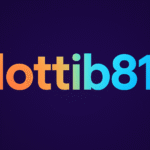Introduction
In the age of information overload, having a reliable system to collect and manage content feeds is crucial for developers, marketers, and researchers alike. FeedBuzzard has emerged as a practical tool that simplifies data collection, allowing users to aggregate content from multiple sources in a structured and efficient way. Whether you want to monitor news, gather social media updates, or organize blog posts, FeedBuzzard offers a powerful platform for automating these tasks.
This article provides a step-by-step guide on how to code with FeedBuzzard, integrate its API into your projects, and use best practices to ensure your data collection is accurate and efficient. We will cover key features, troubleshooting tips, and real-world applications, making it a comprehensive resource for beginners and experienced developers alike. By the end of this guide, you’ll know exactly how to harness FeedBuzzard to optimize your workflows.
Understanding FeedBuzzard
What is FeedBuzzard?
FeedBuzzard is a data aggregation platform designed to pull content from various online sources and present it in an organized format. It allows users to monitor updates across multiple websites, social channels, and blogs without manually visiting each source. This automation saves time and ensures that important information is always at your fingertips.
FeedBuzzard combines data aggregation, content filtering, and API integration into a single platform, giving developers flexibility and control over how they manage and use content feeds. Its intuitive interface and structured data output make it suitable for both beginners and professionals.
Key Features
-
Content Aggregation – Collects articles, news, and posts from multiple online sources.
-
API Integration – Provides seamless integration with your projects for automated data fetching.
-
Real-Time Updates – Keeps your feeds current by updating them as new content is published.
-
Structured Data – Returns data in a format that is easy to process programmatically.
-
User-Friendly Interface – Designed for quick setup and easy navigation, with clear controls for managing feeds.
Getting Started with FeedBuzzard
Setting Up Your Account
-
Create an account with your email and verify it.
-
Log in to access the dashboard where you can manage feeds and API keys.
-
Familiarize yourself with the dashboard layout: feeds, API keys, analytics, and settings.
Creating Your First Feed
-
Navigate to the “Feeds” section.
-
Click on “Create New Feed” and input the URL or source you want to monitor.
-
Customize parameters such as keywords, frequency, and content type.
-
Save your feed to start automatic data collection.
Coding with FeedBuzzard
API Integration Basics
FeedBuzzard allows you to fetch feed data programmatically using its API. Here’s a step-by-step approach:
-
Obtain Your API Key – You need an API key from your dashboard for authentication.
-
Set Up the Endpoint – Use the endpoint provided to fetch feeds. For example, using a
GETrequest. -
Include Authentication – Pass your API key in the request header to validate access.
-
Parse the Response – FeedBuzzard API returns JSON data, which you can parse to extract titles, links, published dates, and content.
Sample Code Snippet
This simple example shows how to retrieve content programmatically and handle it for further processing or display.
Handling API Responses
-
Always check the
statusfield to detect errors. -
Handle missing fields gracefully to prevent code crashes.
-
Implement retries and error handling for failed requests or timeouts.
Best Practices for Using FeedBuzzard
-
Optimize Feed Parameters – Limit results and use filters to avoid unnecessary data.
-
Implement Caching – Store previously fetched results locally to reduce redundant API calls.
-
Monitor API Usage – Keep track of requests to avoid exceeding rate limits.
-
Stay Updated – Regularly check the platform’s updates for new features or improvements.
-
Clean Data – Validate and sanitize incoming data to ensure accuracy and avoid processing errors.
Troubleshooting Common Issues
Issue 1: Invalid API Key
-
Verify your key matches the one provided in the dashboard.
-
Ensure your account has the proper permissions.
Issue 2: Rate Limiting
-
Spread API calls over time and use exponential backoff for retries.
-
Monitor usage to prevent service interruptions.
Issue 3: Parsing Errors
-
Check that JSON is formatted correctly.
-
Handle null or missing fields in your code.
Issue 4: Feed Not Updating
-
Verify that the source URL is still active.
-
Check filter settings to ensure content matches criteria.
Advanced FeedBuzzard Techniques
Keyword Filtering
-
Use keyword parameters to retrieve only relevant articles.
-
Combine multiple keywords with logical operators for precise results.
Multi-Source Aggregation
-
Collect data from multiple feeds simultaneously.
-
Merge and sort content to create a unified feed for analytics or dashboards.
Automation and Scheduling
-
Schedule automated data fetching at intervals.
-
Combine with local databases or cloud storage for long-term storage and analytics.
Real-World Applications
-
Content Marketing – Aggregate trending articles for blogs or newsletters.
-
Social Media Monitoring – Track mentions and trending topics across platforms.
-
Research and Analytics – Collect data for sentiment analysis, trend analysis, or academic research.
-
News Aggregation – Build your own curated news portal without manually checking sources.
-
Product Monitoring – Track competitor updates, announcements, or reviews.
Read More: Wutawhacks Columns: Boost Productivity Fast
Conclusion
FeedBuzzard is more than just a content aggregator—it’s a versatile platform that empowers users to collect, organize, and utilize information efficiently. Its intuitive interface, robust API, and real-time updates make it suitable for both beginners and experienced developers. By following best practices such as parameter optimization, caching, and proper error handling, you can ensure that your data collection process is reliable and efficient.
Whether you are a marketer tracking trends, a developer building an application, or a researcher analyzing content, mastering FeedBuzzard allows you to automate tedious tasks and focus on extracting actionable insights from your data. By integrating FeedBuzzard into your workflows, you can streamline operations, stay ahead of competitors, and leverage content more effectively than ever before. Its combination of flexibility, speed, and reliability makes it a go-to solution for modern content aggregation needs.
FAQs
1. What is FeedBuzzard?
FeedBuzzard is a content aggregation platform that collects and organizes feeds from multiple online sources, helping users access and manage data efficiently.
2. How do I code with FeedBuzzard?
You can use the API to fetch feed data programmatically. Obtain your API key, call the endpoint, and parse the JSON response in your preferred programming language.
3. Can FeedBuzzard be used by beginners?
Yes, it has a user-friendly interface and clear documentation, making it accessible for beginners while still providing advanced features for experienced developers.
4. Does FeedBuzzard support real-time updates?
Yes, the platform continuously updates feeds, ensuring you always have the latest content from your sources.
5. Are there limits to API usage?
Yes, FeedBuzzard enforces rate limits to ensure fair usage. Monitoring API calls and implementing best practices helps prevent hitting these limits.










